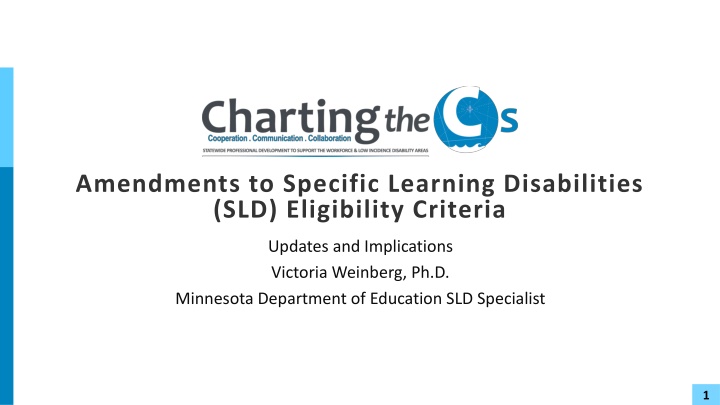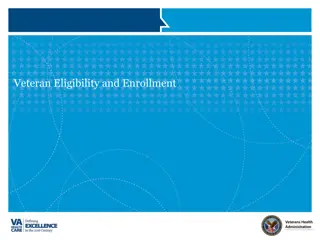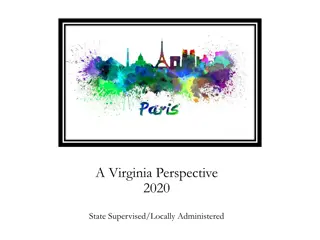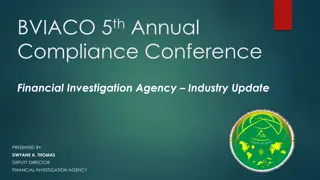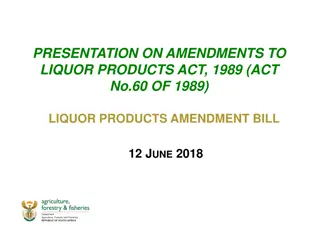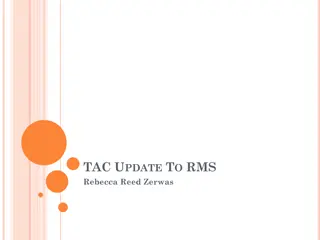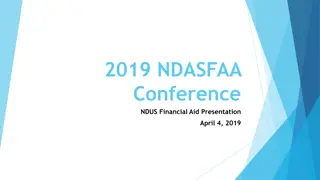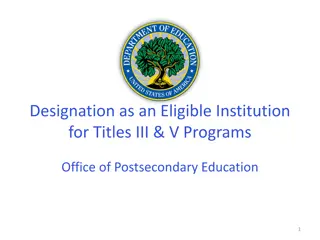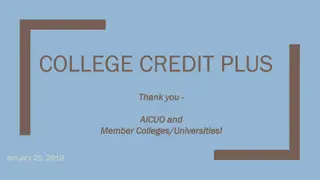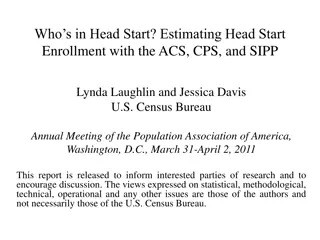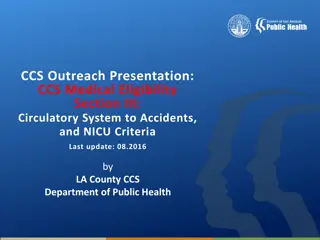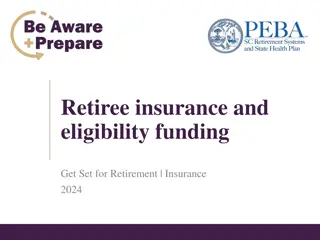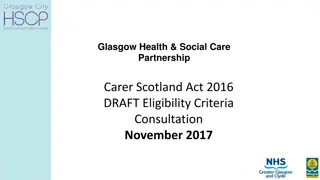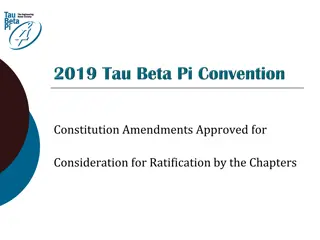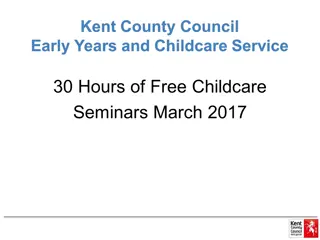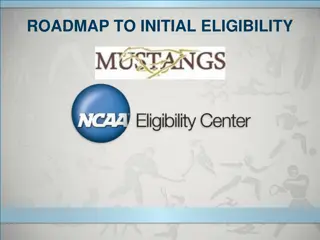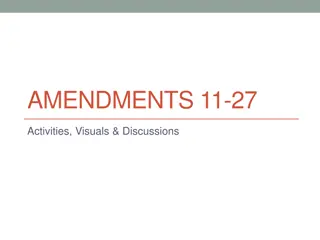Amendments to SLD Eligibility Criteria: Updates and Implications
This presentation discusses the amendments to Specific Learning Disabilities (SLD) eligibility criteria, including the removal of reference to discrepancy, defining inclusionary and exclusionary criteria, proposing operationalized draft language, and measuring outcomes over time. The committee's responsibilities, agenda, and makeup are outlined, emphasizing the collaboration between professionals, organizations, and parents in co-creating recommendations for SLD eligibility decisions.
Download Presentation

Please find below an Image/Link to download the presentation.
The content on the website is provided AS IS for your information and personal use only. It may not be sold, licensed, or shared on other websites without obtaining consent from the author.If you encounter any issues during the download, it is possible that the publisher has removed the file from their server.
You are allowed to download the files provided on this website for personal or commercial use, subject to the condition that they are used lawfully. All files are the property of their respective owners.
The content on the website is provided AS IS for your information and personal use only. It may not be sold, licensed, or shared on other websites without obtaining consent from the author.
E N D
Presentation Transcript
Amendments to Specific Learning Disabilities (SLD) Eligibility Criteria Updates and Implications Victoria Weinberg, Ph.D. Minnesota Department of Education SLD Specialist 1
Charge of the Committee The committee will make recommendations for amending the rule. Responsibilities include: Removing reference to discrepancy. Defining inclusionary criteria and exclusionary criteria. Proposing draft language that can be operationalized for training, implementation, and monitoring. Defining the intended change and expected outcome that is measurable over time. 2
Agenda for the Day Participants will Understand the scope and way the work is progressing. Understand the baseline of SLD eligibility in the state. Digest the priorities. Wrestle with the considerations. Uncover what we are already learning about the next right steps. 3
The Make-up of the Committee and Workgroups Professional Organizations Minnesota Administrators for Special Education (MASE) Minnesota Speech-Language- Hearing Association (MNSHA) Minnesota School Psychologist Association (MSPA) Parents of students with SLD Advocacy Groups PACER Center Learning Disabilities Association (LDA) of Minnesota Upper Midwest Branch of the International Dyslexia Association (UMBIDA) The Reading Center/Minnesota Dyslexia Institute 4
The Make-up of the Committee and Workgroups Continued Professional Organizations cont. Positions from Districts Designs for Learning (DL) INDIGO Education Center for Applied Research and Educational Improvement (CAREI) Hiawatha Valley Educational Cooperative Special Education Case Managers School Psychologists MTSS Specialists Adjunct Professors MDE staff from 5 divisions 5
28 Parents and Professionals Are Co-creating the Recommendations The committee has vast experience with eligibility decisions. Multiple practitioners have worked in other states with similar criteria to what is being proposed. 6
Priorities of the Committee 1. Criteria will yield increased consistency in identification (district to district, region to region). 2. Address the overidentification of minority students. 3. Provide timely evaluation and generate useful data for program planning. 7
Considerations for the Work Base it on up-to-date research. Remove discrepancy but retain federal regulatory and other state rule requirements. Use terms that will endure the test of time and updates from research. The criteria must apply to all eight areas. Distinguish recommendations for rule language from that of technical assistance. Keep the focus on eligibility don t try to solve other problems with criteria. 8
Change in Criteria has significant impact: Public Schools and Districts 506 Number of Schools 2,252 351 Alternative Learning sites 126 Distance Learning Programs Teachers 57,057 Special Educators 10,972 9
Prevalence of SLD and other High Incidence Disabilities *Developmental Delay is available for students up to age 7 years old. 10
Remove Discrepancy and Retaining Federal Regulations Means IQ tests are no longer required Retaining IQ tests not interchangeable with cognitive processing. Right to comprehensive evaluation and independent evaluation on request. Cognitive processes overlap with other disabilities and are not reliable for sorting one disability from another no longer recommended as criteria. Right to conduct an override when data or procedures cannot be applied. Use of multiple sources of data and keep standardized assessments. Farris, E. Alexander, E. And Odegard T, (2020); Fletcher, J. and Miciak J. (2024) 13
Universal Basis for SLD in Research Lack of Achievement: Below age or grade level standards Achievement is Unexpected: Given appropriate and evidence-based instruction Student is Capable: Evidence of learning can be measured Cause: Not primarily attributable or the result of other disability Farris, E. Alexander, E. And Odegard T, (2020) pp. 9-13 14
Which of the terms would be problematic in a new rule? A. Trend line, aim line, expected growth B. DSM diagnoses such as dyslexia, dyscalculia, dysnomia, dysgraphia C. Consistency, integrity, fidelity 15
Which terms should be defined in rule? Which should be defined in technical assistance? Which terms should be clarified? A. Relative peer group B. Inadequate rate of progress C. Intensity, duration, dosage, comprehensiveness, frequency D. Primarily due to 16
The purpose of criteria is to 1. Identify students who have a learning disability that is not primarily the result of other disabilities or factors. Which of these do not fit the purpose ? A. Too many _____ will qualify if B. Special educators are underprepared to teach 2. Distinguish disability from lack of appropriate instruction. C. Districts don t have the _____ to do this work 3. Design instruction for those who require specially designed instruction and supports to access and make continued progress in the general educational curriculum (IDEA). D. Students can t be eligible if they didn t get structured literacy in core 17
New Criteria will likely include use of charts and graphs Comprehension is improved when data is visualized. Committee's recommendations likely to include use of norms and comparison groups. Providers of data such as GOM, MCA, etc. already include graphs, so they must transfer into Special Education Forms. 18
Next Steps 1. Complete usability testing to determine if recommendations can be applied, trained, monitored. 2. Determine baseline and ways of measuring if the proposed changes will address the priorities. 3. Anticipate the work ahead. 19
Already Being Uncovered 1. There are significant gaps in knowledge with current regulations and state rules. 2. Infrastructure to visualize data and progress as well as share data across districts and platforms will need to be built. 3. The application of changes may require differentiated procedures for non-public, home-schooled, or students without prior history. 4. Changes in criteria cannot fix all areas of concern. Eligibility determinations are an adaptive problem that requires systems, data, policies, and teams to collaborate effectively. 20
Thank you! Vicki Weinberg Vicki.Weinberg@state.mn.us 21
